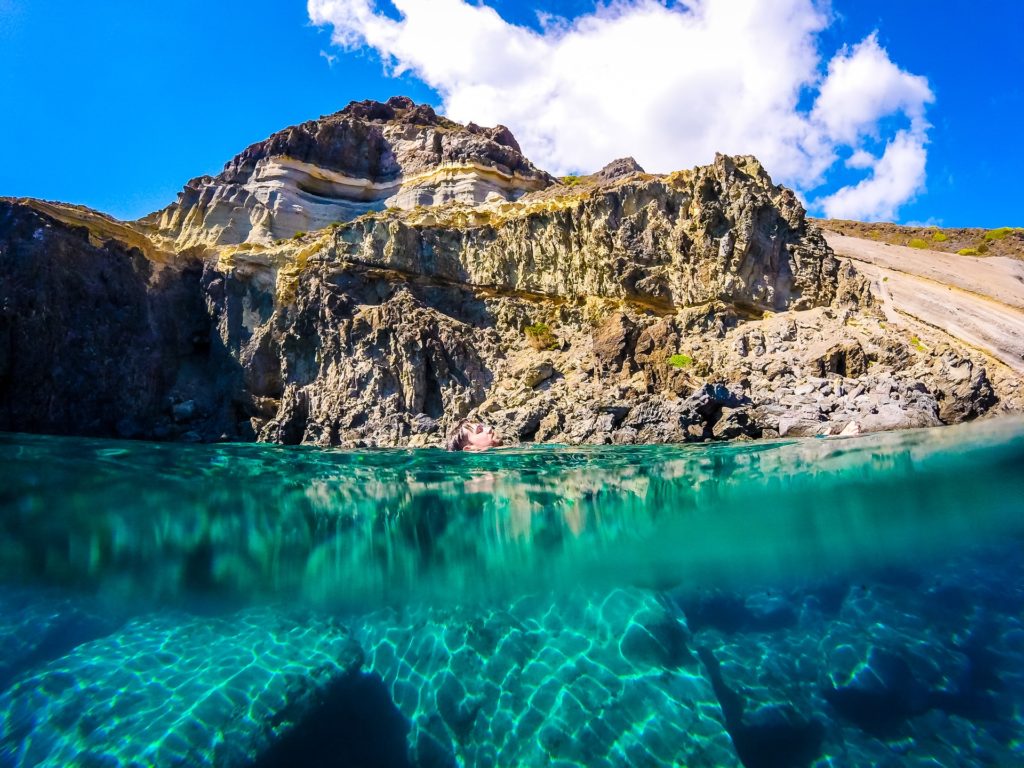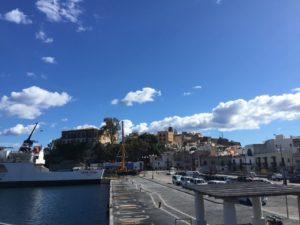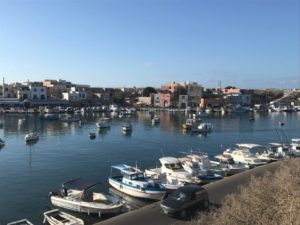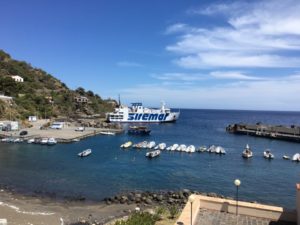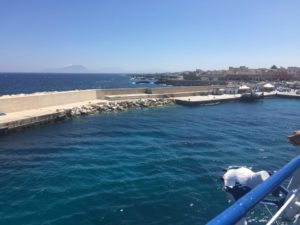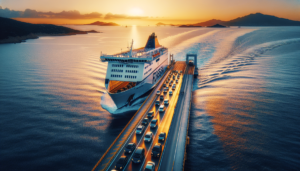What to do in Pantelleria
When there is the island of Pantelleria on your travel program, do not expect stretches of sand but rather enchanting rocky coves bathed by the pristine sea, natural spas, unique landscapes and food and wine of a certain level. The central territory is largely an Oriented Nature Reserve, created to protect the richness of the biodiversity of flora and fauna in the area. You can go horseback riding, you can go hiking and trekking, visit the archaeological sites that testify the passage of different peoples on the island, called the Daughter of the Wind, starting from the presitoric tribes up to the Arabs and the Byzantines. Even today, however, the architectural symbol of Pantelleria remain the dammusi (and other agricultural constructions created by the locals, such as the adjacent gardens and dry stone walls), built starting from the 10th century AD. and then perfected over time.
The agricultural practice of growing the Zibibbo sapling vine, typical of Pantelleria, has been declared a UNESCO World Heritage Site. The grapes produced with this cultivation are used to produce the Passito di Pantelleria DOC, with a complex process that ends with the ritual of the harvest at the end of July. But, if you don’t need to know how to reach Pantelleria by ship or hydrofoil, let’s immediately see what to do absolutely on this volcanic island geographically closer to Tunisia than to Italy.
1) Go to the beach at the Lake of Venus
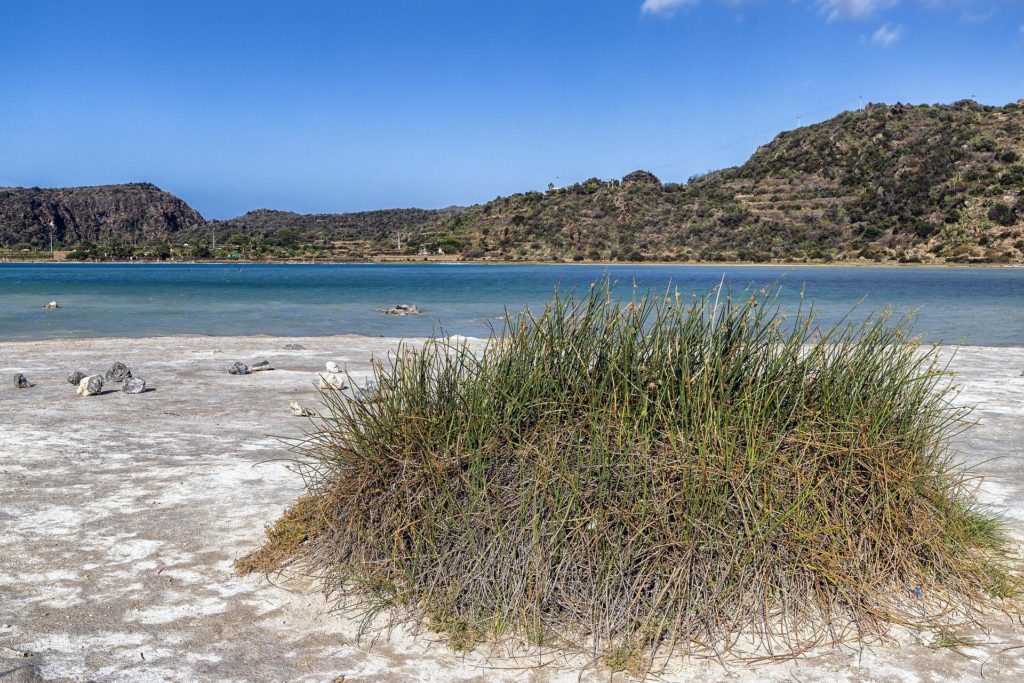
The Lake of Venus, also known as the Mirror of Venus, was formed inside the crater of an extinct volcano. The beach that surrounds it is bathed in warm thermal water which in some places becomes boiling. The bottom of the lake, which can reach a depth of twelve meters, is made up of thermal mud. Near the stretch of water there is no shortage of plants and birds, and there are also the remains of a temple transformed several times in various historical periods, from the Bronze Age to the Imperial Roman age.
2) Take a natural sauna in the “dry bath”
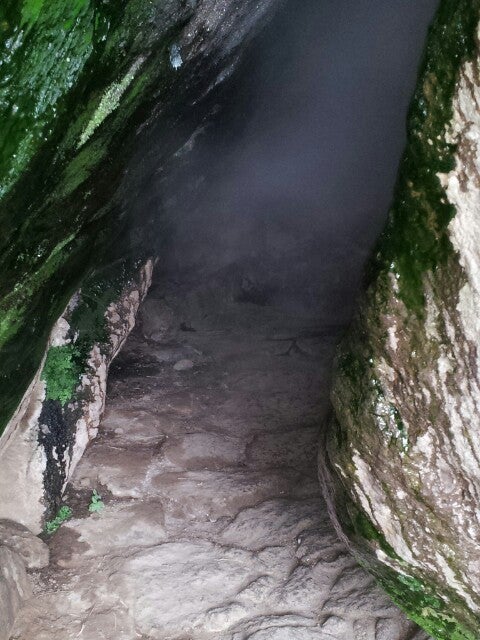
In the Benikulà Cave, called dry bath, water vapor escapes at a temperature of about 40 degrees Celsius. The maximum capacity is three or four people, who can enter together to enjoy a natural sauna. In addition, the landscape of the itinerary leading to the cave, to be taken after traveling the main road that connects Sibà to Scauri, is very scenic.
3) Go to the sea
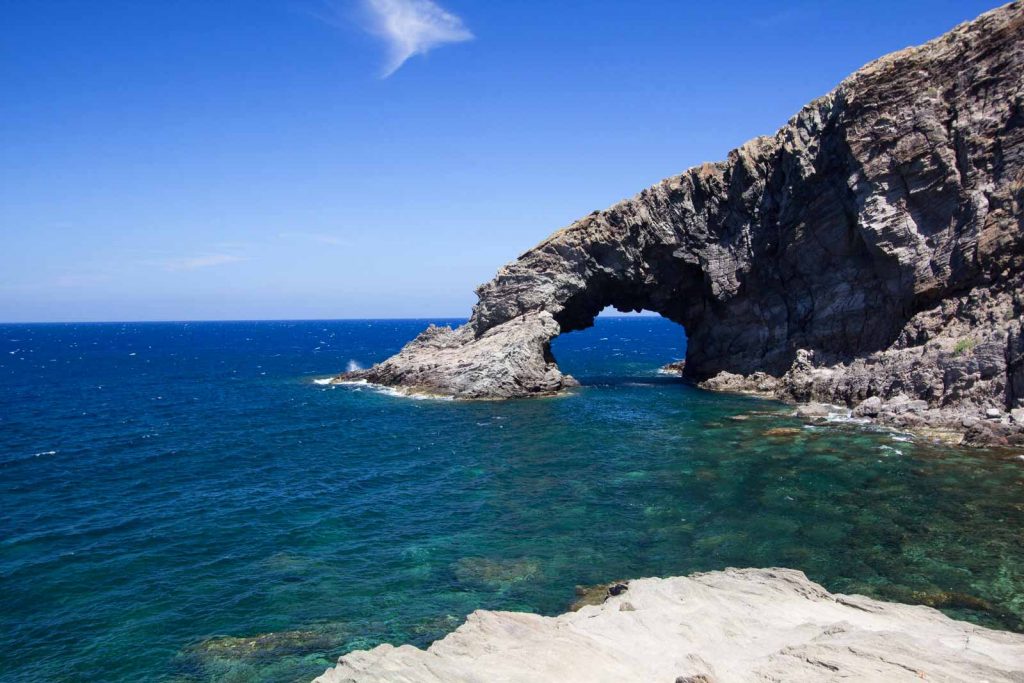
Starting from the assumption that there are no beaches in Pantelleria, one of the most beautiful places to swim is certainly Cala Levante, a small rocky bay with spectacular backdrops, from which both the Great Faraglione of Punta Tracino and, on the right, the famous Elephant Arch are clearly visible. The Arco dell’Elefante is a rock formation with the trunk that plunges into the crystal clear waters. On the side there is Cala Tramontana, where you can move if the Libeccio wind blows (from the south east).
4) Visit the Pantelleria Garden of Donnafugata
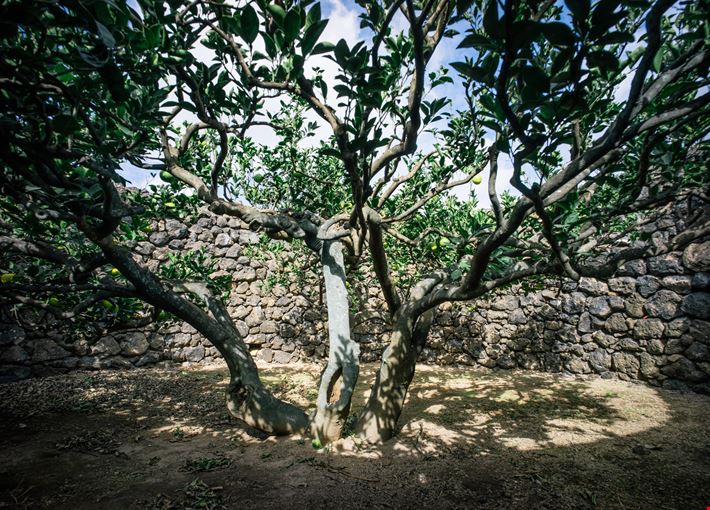
The Pantelleria garden of the Khamma district, a typical example in excellent condition (recently restored) of the buildings dating back to 3,000 BC. which protect plants from strong winds and intercept and deposit rainwater and water from the atmosphere thanks to condensation, was donated to the FAI (Fund for the Italian Environment) by the Donnafugata winery. A centuries-old orange of the Portugal variety benefits from the ancient architecture characterized by the dry lava stone enclosure. It is in this area that Ben Ryé, Passito di Pantelleria Doc is produced. Donnafugata in fact cultivates Zibibbo (Moscato d’Alessandria) with Pantelleria sapling and centenary prefillossera vines. You can visit the garden among the vineyards for free, or even have wine or food and wine tastings.
5) Have lunch – or stay – in a dammuso
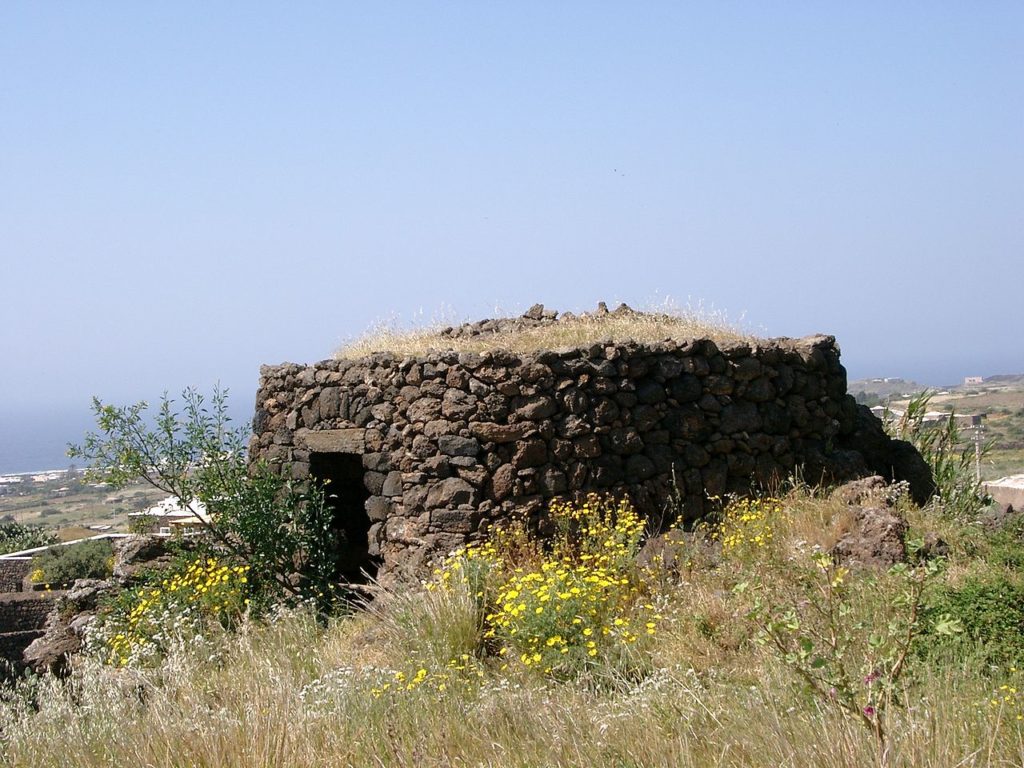
Only in Khamma there are almost 2,000 dammusos, the houses built with lava stones typical of Pantelleria, currently (in many cases) modernized. On the sea, in Cala Gadir, where two pools carved into the rock contain thermal water at 55 degrees Celsius, there is one of the many belonging to famous people: that of Giorgio Armani. A little further down, in the small port of the cove, there is the dammuso of the Murana family winery, where you can sit for a lunch based on typical dishes, washed down with wine and passito at km 0. You can also stay and sleep in a dammuso: there are, in fact, those used as tourist accommodation facilities, those for rent or even for sale.
6) Go and see the sapling vineyards and caper orchards
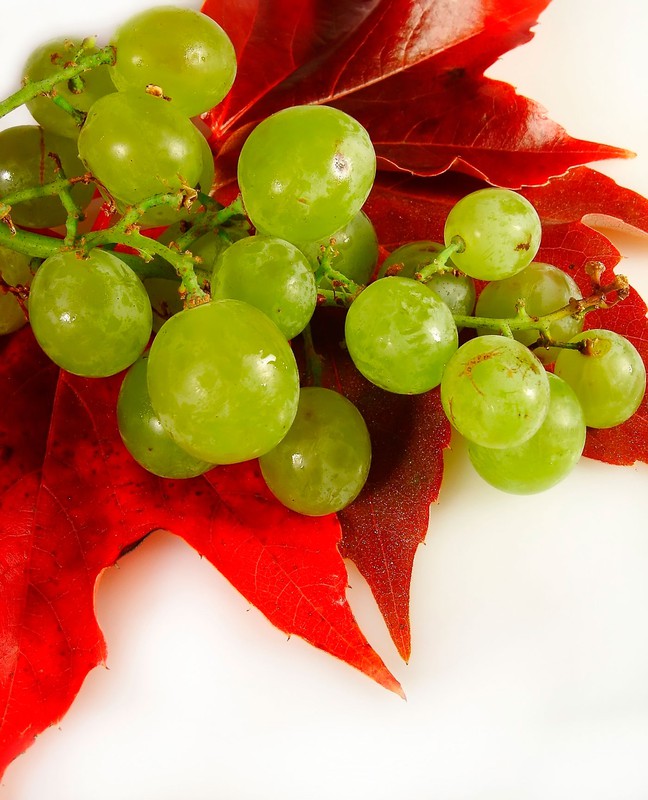
The agricultural practice of the sapling vine in 2014 became an Intangible Heritage of Humanity due to its uniqueness. The vines characterized by the Pantelleria sapling are grown in small hollows that protect the vines from the wind and ensure the collection of rainwater. This ancient Phoenician technique generates the Zibibbo grape, from which the famous Passito di Pantelleria is born. The largest vineyards are located in Bukkurám, Piana di Ghirlanda, Piana di Monastero. In Tracino, from where the Arco dell’Elefante is a stone’s throw away, the countryside is cultivated with both vines and capers.
The most interesting capers are those of Mount Gibéle, in a terraced area with dry stone walls included both in the National Register of Historic Rural Landscapes as “Pantelleria dry stone landscape”, and in the UNESCO World Heritage List.
Book a ferry
7) Go around the island by boat
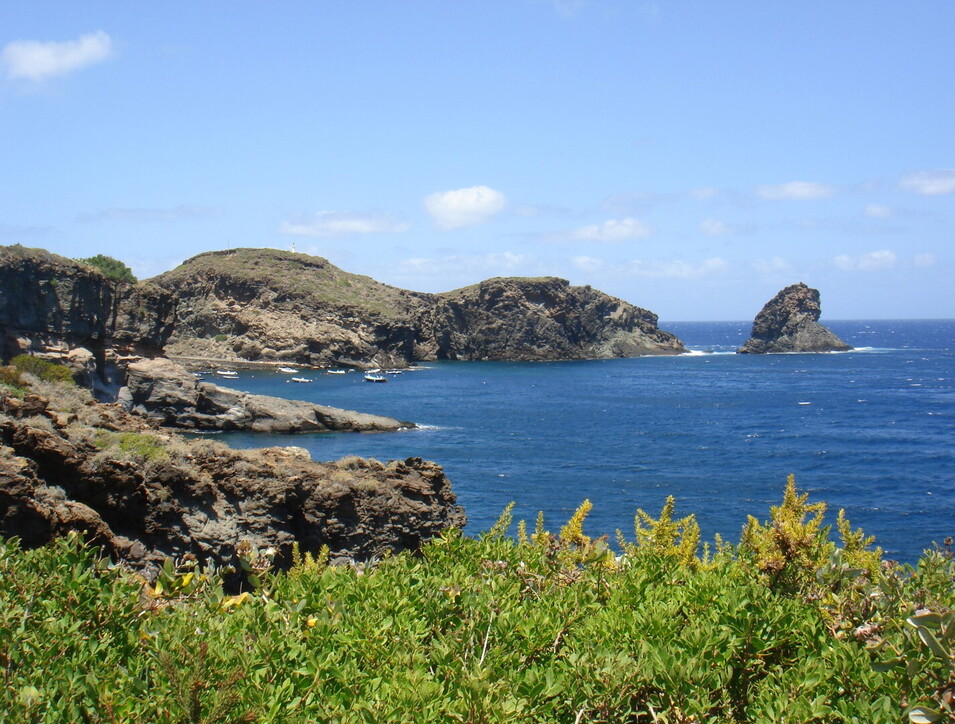
The experience of going around the island of Pantelleria by boat is one not to be missed. It is possible to discover and experience places – bays, beaches, coves and particular rocks and stretches of coast – reachable only by sea. Tours are organized on boats of different sizes, with the possibility of stopping and swimming, having lunch on board, sharing the experience exclusively with your own small group or with others. All to be experienced are Cala dei Cinque Denti, Cinderella’s Scarpetta inlet, Lovers’ beach, the caves of Behind Isola, the Faraglioni del Formaggio and many other Pantelleria wonders.
8) Visit the Sesi Archaeological Park
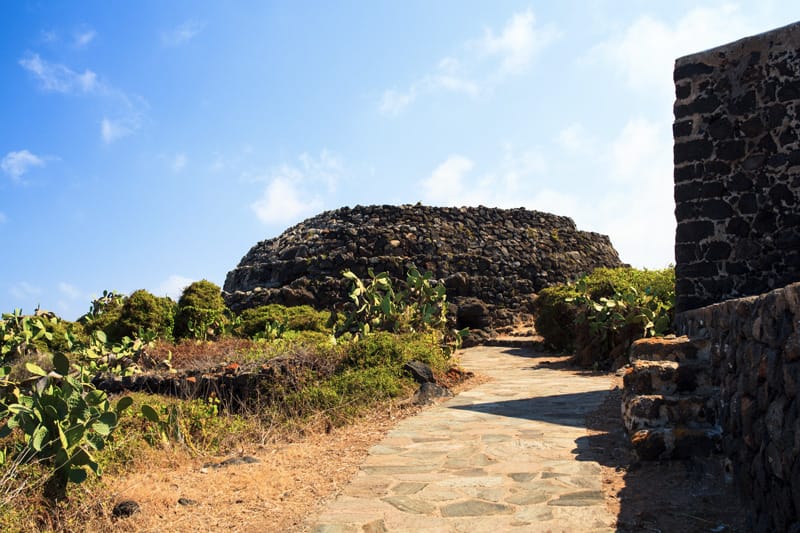
In the north-western area of the island, in the Cimillia and Mursia districts, we find an archaeological park with megalithic constructions of about 5,000 years ago called Sesi. These are truncated cone burial mounds, with a circular or elliptical plan. One in particular has survived intact to the present day: the Big Sese or King’s Sese, more than five meters high. The others are divided into Major Sesi and Minor Sesi, of decreasing dimensions. These tombs from the second millennium BC in lava stone were built by the Neolithic populations who inhabited this area of the island. Inside, the ancient monuments are divided into various small rooms connected by tunnels.
9) Taste the local food and wine
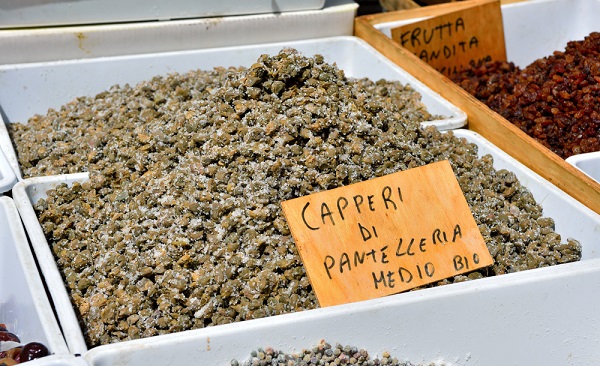
Pantelleria food and wine is characterized more by products from the land than those from the sea, despite the fact that there is no lack of fish, molluscs and crustaceans, currently being re-proposed on a gastronomic level due to the strong tourist demand. The traditional catch consists of octopuses, squid, moray eels, seafood and reef fish. Meats include purpittéddre (beef meatballs), wild rabbit, briçióle, a kind of meatloaf, and baked çavaréddru (kid) with potatoes. The so-called bitter ravioli are filled with the local ricotta, túmma, and mint. The local koús koús is based on fish and fried vegetables, while in the typical Pantelleria salad we find boiled potatoes, capers, onions, tomatoes and dried fish, and ammógghiu is a tomato and garlic sauce. The famous capers of Pantelleria have the Protected Geographical Indication (PGI) mark; preserved in sea salt, they are used to make pesto, fish sauces, pates, appetizers and more. The king of enology is Moscato di Pantelleria, made with Zibibbo grapes (Moscato di Alessandria). Although there are also the Golden, Spumante and Liquoroso versions, the Passito is very famous. The sweet grand finale is undoubtedly the pantesco kiss, with sheep’s milk ricotta wrapped in a flower-shaped pancake.
10) Enter the Castle of Pantelleria
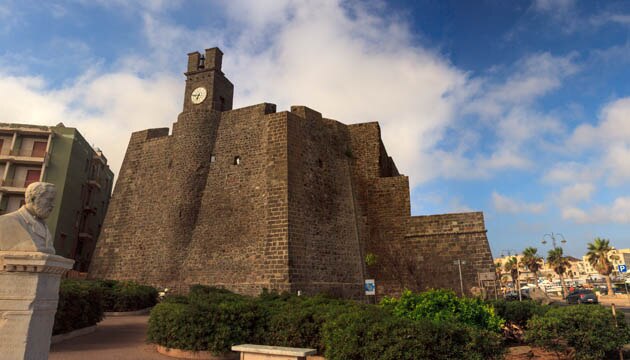
The Castle of Pantelleria (also known as Barbacane castle) is located near the old port and it is also home to the Archaeological Museum, where the Heads of Pantelleria are kept (marble effigies from the Augustan period portraying Julius Caesar, Tito and Agrippina, found in acropolis on the hill of San Marco). The ancient four-storey building, of at least medieval origin, consists of a central core, two bastions, a courtyard and a tower. The opening days are subject to change and it is therefore advisable to ask for information at the tourist offices of the municipality.

